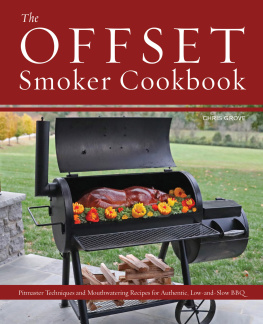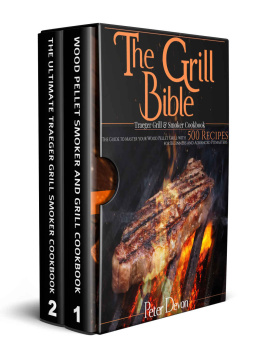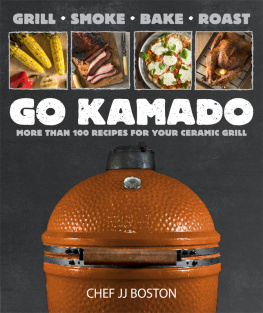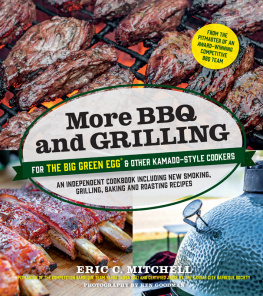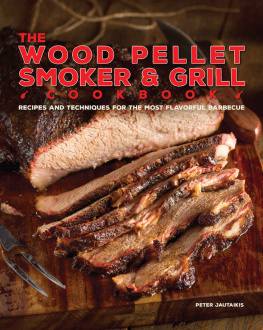

Text Copyright 2014 Chris Grove. Design and concept copyright 2014 Ulysses Press and its licensors. All rights reserved. Any unauthorized duplication in whole or in part or dissemination of this edition by any means (including but not limited to photocopying, electronic devices, digital versions, and the Internet) will be prosecuted to the fullest extent of the law.
Published by
Ulysses Press
P.O. Box 3440
Berkeley, CA 94703
www.ulyssespress.com
ISBN: 978-1-61243-385-1
Library of Congress Catalog Number 2014932306
10 9 8 7 6 5 4 3 2 1
Acquisitions editor: Katherine Furman
Managing editor: Claire Chun
Project editor: Alice Riegert
Editor: Phyllis Elving
Proofreader: Elyce Berrigan-Dunlop
Front cover design: what!design @ whatweb.com
Interior layout and design: what!design @ whatweb.com
Illustration page 3: Suman Kasturia
Cover photograph: Chris Grove
Interior photographs Chris Grove except: page 32 (top left) Jay Prince; page 60 (bottom left/right), page 208 Brandi Shive; page 21, 29 (right), 37, 67, 119, 128 (left) Alexis Grove
Food stylist: Alexis Grove
Index: Sayre Van Young
Distributed by Publishers Group West
IMPORTANT NOTE TO READERS: This book is independently authored and published and no sponsorship or endorsement of this book by, and no affiliation with, any trademarked brands of the kamado grill or other trademarked brands or products mentioned within is claimed or suggested. All trademarks that appear in this book belong to their respective owners and are used here for informational purposes only. The author and publisher encourage readers to patronize the quality brands and products mentioned in this book.
CONTENTS
I love green bell peppers, but my neighbor John doesnt like them. I only point that out because when I started thinking about what to include in this book, it made me want to offer something besides just a bunch of recipes to follow. People have specific taste preferences, and if a recipe includes something they dont like, theyll either not make it or leave that ingredient out which could drastically change the result. So instead of only recipes, I want to provide kamado owners with inspiration and a toolkit of ideas to help them explore what their ceramic cookers can do. I want to give readers tips and techniques they might not have tried before. My sister bought her first kamado grill about a year ago and we have had countless emails, phone calls, and texts about discovering her new cooker. I want this book to capture the essence of all of those back-and-forth conversations so the information can be shared with anyone else who wants to learn the ins and outs of kamado grilling.
The tips and techniques that I share here arent the only way to do things. I dont want to be that guy in barbecue forums who smugly berates someone because you are doing it the wrong way. For example, ribs that are fall off the bone are generally acknowledged as overcooked in the barbecue community, especially in competitions. But if thats how you and your family like them, thats how you should cook them. If you prefer to foil your brisket and like the way it turns out, who cares if some guy in Texas says it isnt traditional?
Regardless of what I may lay out in this book, I hope that you will cook according to your own preferences and style.
I have often heard people mention that the kamado grill is a 3,000-year-old design. While the kamado, a wood-fired clay stove, has been in use in Japan for that long, the oval-shaped, self-contained grill is really a modern development.
The kamados ceramics, airtight design, and vent controls make it much different than other grills. Kamados are extremely efficient with very little heat or moisture loss. You can run many kamados at 250F for over 20 hours on one load of lump coal. The design also allows kamados to handle volatile, hot temperatures upwards of 700F. The ceramic construction acts as a heat capacitor, storing heat and then releasing it steadily for stable cooking temperatures and evenly cooked food. When you are done cooking, the airtight design allows you to extinguish the coals and re-use the leftover coal the next time you cook.
CHOOSING YOUR KAMADO GRILL
You cant buy a better cooker for your home than a kamado-style grill. But this isnt a sales pitch, because Im assuming that if youve bought this book, you already own a kamado.
In fact, Im making a few assumptions based on my experiences with a lot of kamado owners. I suspect that you already have a basic understanding of grilling and maybe even smoking. If youre like a good majority of kamado grillers, you probably are intelligent, have a bit of a tech-geek side, stay up on but dont necessarily follow the latest trends, are open to ideas, and are a bit of a risk taker. Am I not too far off?
But on the off chance that youre just thumbing through, Ill offer a few pointers for buying a kamado grill.
Kamados used to be limited to a few key brands, and you could only purchase them from authorized dealers. In the past few years, however, many new manufacturers have entered the game, and the number of places selling kamados has expanded rapidly. You can even buy them at big-box home improvement stores and warehouse clubs. And these arent just poorly made knockoffs either. Most are quality kamados, and some include innovations that top the established brands. Here are some things to consider if you are buying a new kamado today.
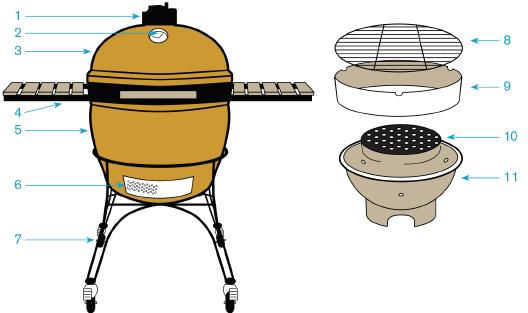
Top vent also called dual-function metal top (DFMT), cast-iron vent, slide top
Dome thermometer
Dome lid
Side shelves also called mates
Base
Bottom vent also called draft door, slide vent
Cart also called nest
Cooking grate also called cooking grid, main grate
Fire ring on some models, the fire ring and fire bowl may be combined as one piece.
Fire bowl also called fire box
KAMADO TERMINOLOGY
Different manufacturers have different terms for the various parts of their kamados, but the functions are mostly the same. For the purposes of this book, Ill be referring to the most common size of kamado, roughly 18-1/2 inches in diameter.
Dealer or other retail outlet? With a dealer, youll get a properly assembled kamado, delivery and setup (in most cases), and local assistance in case of warranty issues, but you will pay a premium. At other retail outlets you often get more accessories included and a significantly lower price, but youll have to set up your kamado yourself and if things go wrong, youll deal directly with the manufacturer. Both have their strong points, so its a personal choice.
Heft and feel. A well-made kamado will feel solid when you open and close the dome lid (and vent controls). Open and close a few different models, and youll quickly gain a sense of what feels like quality and what feels inferior. If it feels cheap (not the same as inexpensive), it probably is.
Terms of warranty. A limited lifetime warranty on ceramics and a five-year warranty on metal parts are common, but you also have to consider how long the manufacturer has been in business.
Existing owners. The best information comes from those folks already using the specific brand. Check their user forums or go to a general barbecue forum like BBQ Brethren and search for comments on that brand. You will find a wealth of informationthat is how I ended up buying my first kamado instead of the offset smoker trailer that I had my eye on.
Next page

